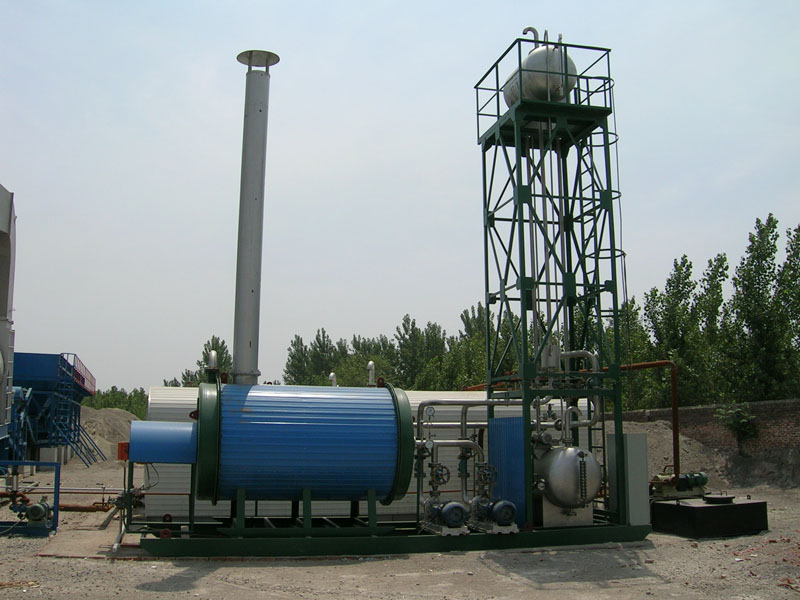 English
English Español
Español  Português
Português  русский
русский  Français
Français  日本語
日本語  Deutsch
Deutsch  tiếng Việt
tiếng Việt  Italiano
Italiano  Nederlands
Nederlands  ภาษาไทย
ภาษาไทย  Polski
Polski  한국어
한국어  Svenska
Svenska  magyar
magyar  Malay
Malay  বাংলা ভাষার
বাংলা ভাষার  Dansk
Dansk  Suomi
Suomi  हिन्दी
हिन्दी  Pilipino
Pilipino  Türkçe
Türkçe  Gaeilge
Gaeilge  العربية
العربية  Indonesia
Indonesia  Norsk
Norsk  تمل
تمل  český
český  ελληνικά
ελληνικά  український
український  Javanese
Javanese  فارسی
فارسی  தமிழ்
தமிழ்  తెలుగు
తెలుగు  नेपाली
नेपाली  Burmese
Burmese  български
български  ລາວ
ລາວ  Latine
Latine  Қазақша
Қазақша  Euskal
Euskal  Azərbaycan
Azərbaycan  Slovenský jazyk
Slovenský jazyk  Македонски
Македонски  Lietuvos
Lietuvos  Eesti Keel
Eesti Keel  Română
Română  Slovenski
Slovenski  मराठी
मराठी  Srpski језик
Srpski језик
What are the precautions when using thermal oil heaters?
2025-04-02
Thermal oil heaters use coal, heavy oil, light oil, combustible gas and other combustible materials as fuel, and thermal oil as heat carrier. The circulating oil pump is used to force the liquid phase to circulate, and the heat energy is transferred to the heat-using equipment, and then returned to the reheated DC special industrial furnace.
Precautions for using thermal oil heaters:
1. Safety inspection
Equipment inspection: Before use, check whether the furnace body, pipelines, valves and other components are damaged or leaking, and focus on checking whether the flange connection and welding parts are tight. At the same time, confirm that the circuit connection is firm and the grounding resistance does not exceed 4Ω.
Environmental requirements: Keep the room well ventilated, stay away from flammable materials, and avoid using in humid or corrosive environments.
Sealing verification: Check whether the seals such as the furnace flange and circulating pump are intact to prevent accidents caused by oil and gas leakage.
2. Operation Specifications
Startup process: Before starting the circulation pump, a jog test is required. After confirming that there is no abnormality, it is officially operated and the pressure gauge value is observed (normal range 0.2-0.4MPa). Circulate the cold oil for 0.5-2 hours and check whether the filter is blocked.
Temperature control: The heating rate is recommended to be ≤20-30℃/hour to avoid thermal shock. The upper temperature limit does not exceed 80% of the flash point of the thermal oil. It is recommended to control it below 200℃ for normal operation.
Exhaust and dehydration: During the heating process, the exhaust valve needs to be opened several times to exhaust air, moisture and mixed steam; the first use must be completely dehydrated.
3. Maintenance
Thermal oil management: Regularly test the acid value, viscosity and other indicators at least once a year; deteriorated oil needs to be replaced in time. When replacing the thermal oil, the pipeline needs to be thoroughly cleaned, and different oils are prohibited from being mixed.
Equipment maintenance: Regularly clean the dust and coking on the surface and inside of the heater to ensure the heat dissipation effect. Check whether the electric heating element is open or short-circuited. If it is not used for a long time, the heat transfer oil needs to be drained and the inside needs to be cleaned.
4. Safety protection
Protection device: The system needs to be equipped with over-temperature protection, pressure safety valve, oil shortage protection, etc., and automatically shut down or alarm when abnormal.
Emergency treatment: It is forbidden to flush the furnace with water during emergency shutdown. The temperature needs to be slowly cooled to below 70℃ before stopping the pump. If abnormal pressure or leakage is found, shut down and check immediately.
5. Other precautions
Pipeline insulation: The heat transfer oil pipeline needs to be insulated, but the flange connection should not be wrapped.
Oil purity: The system needs to be equipped with a filter to prevent impurities from entering the oil pump, and the filter should be cleaned regularly.
Regular inspection: Conduct a comprehensive inspection of the heat transfer oil every six months, and check the corrosion of the pipeline at the same time.





